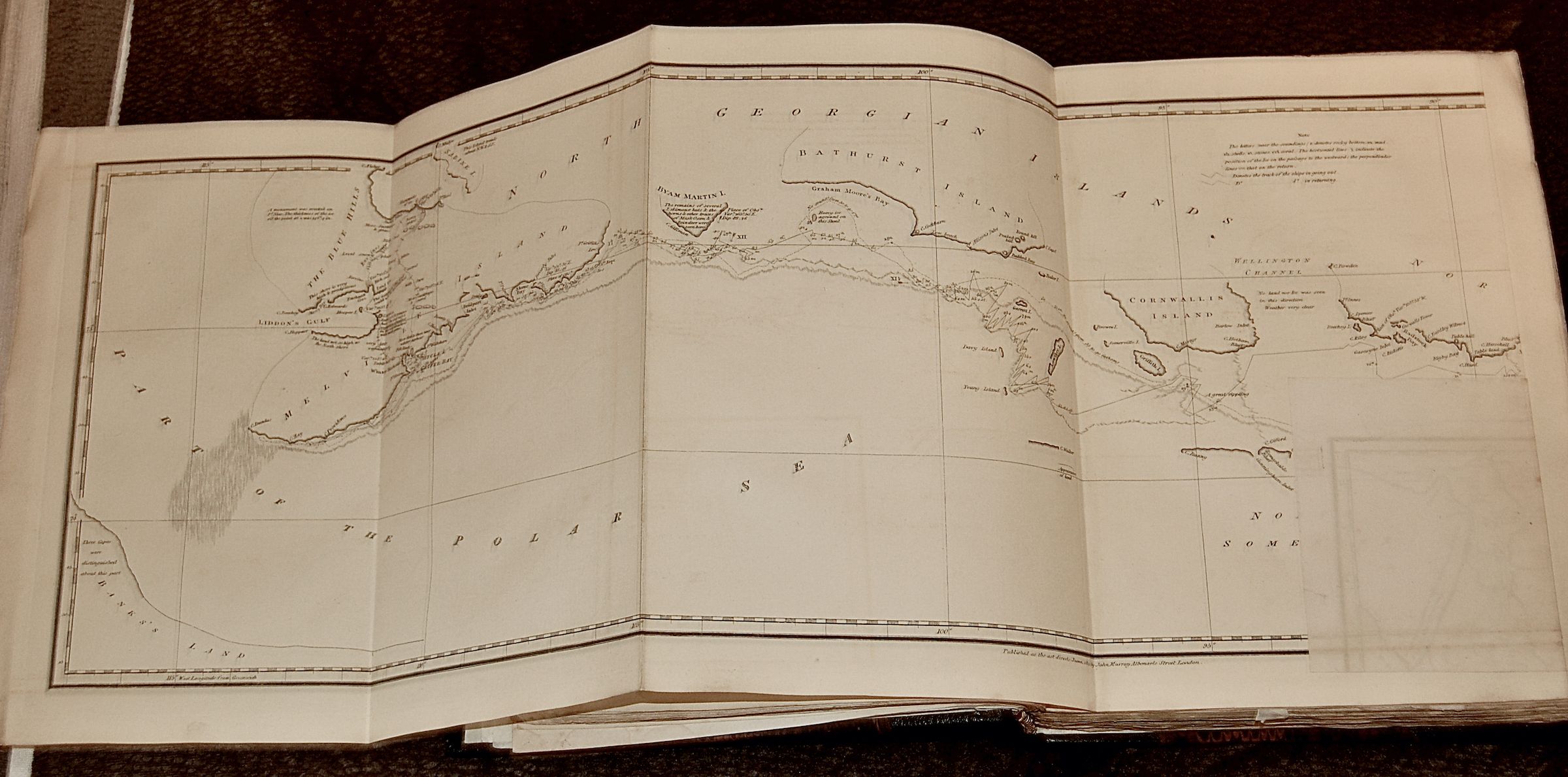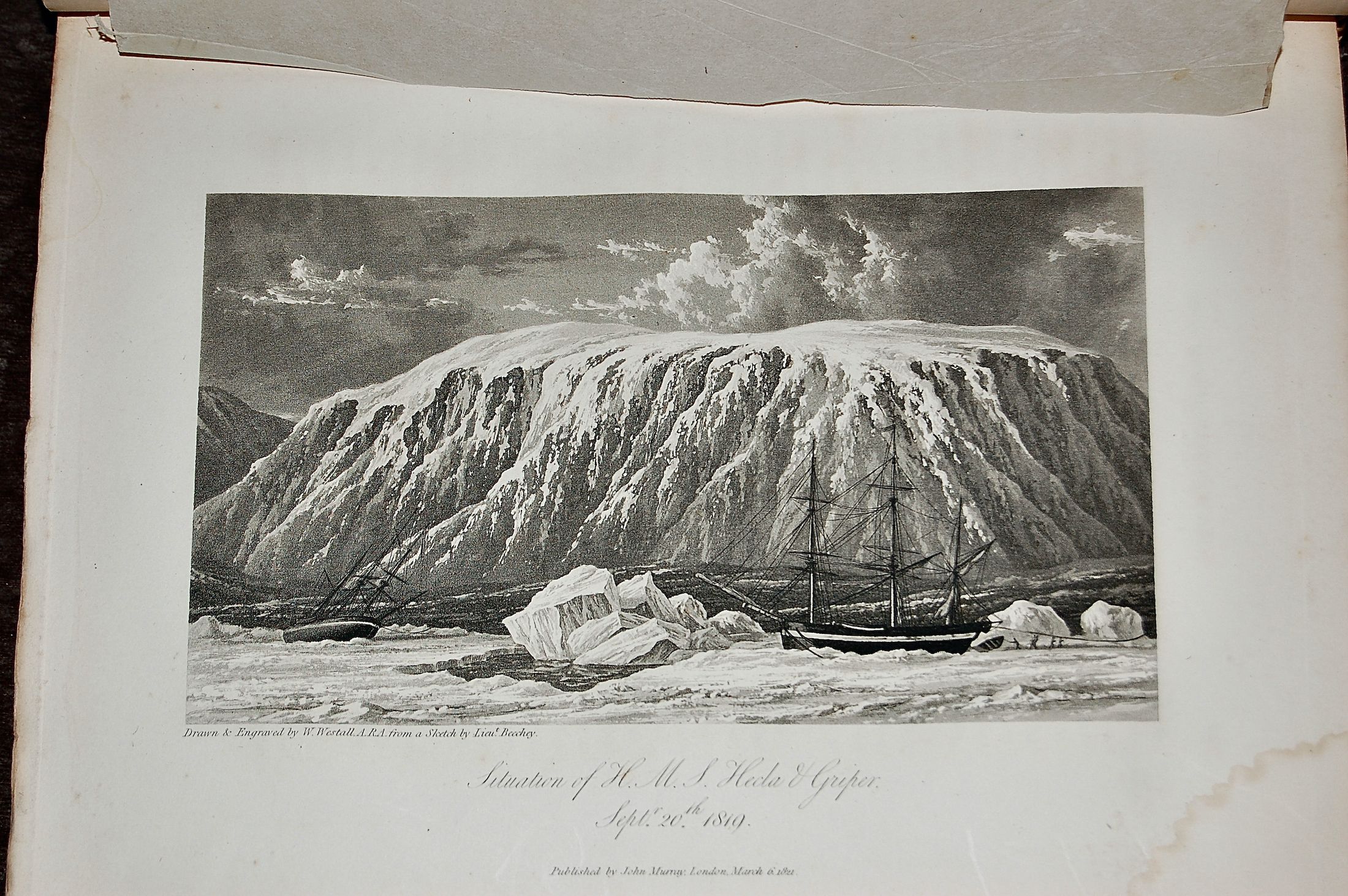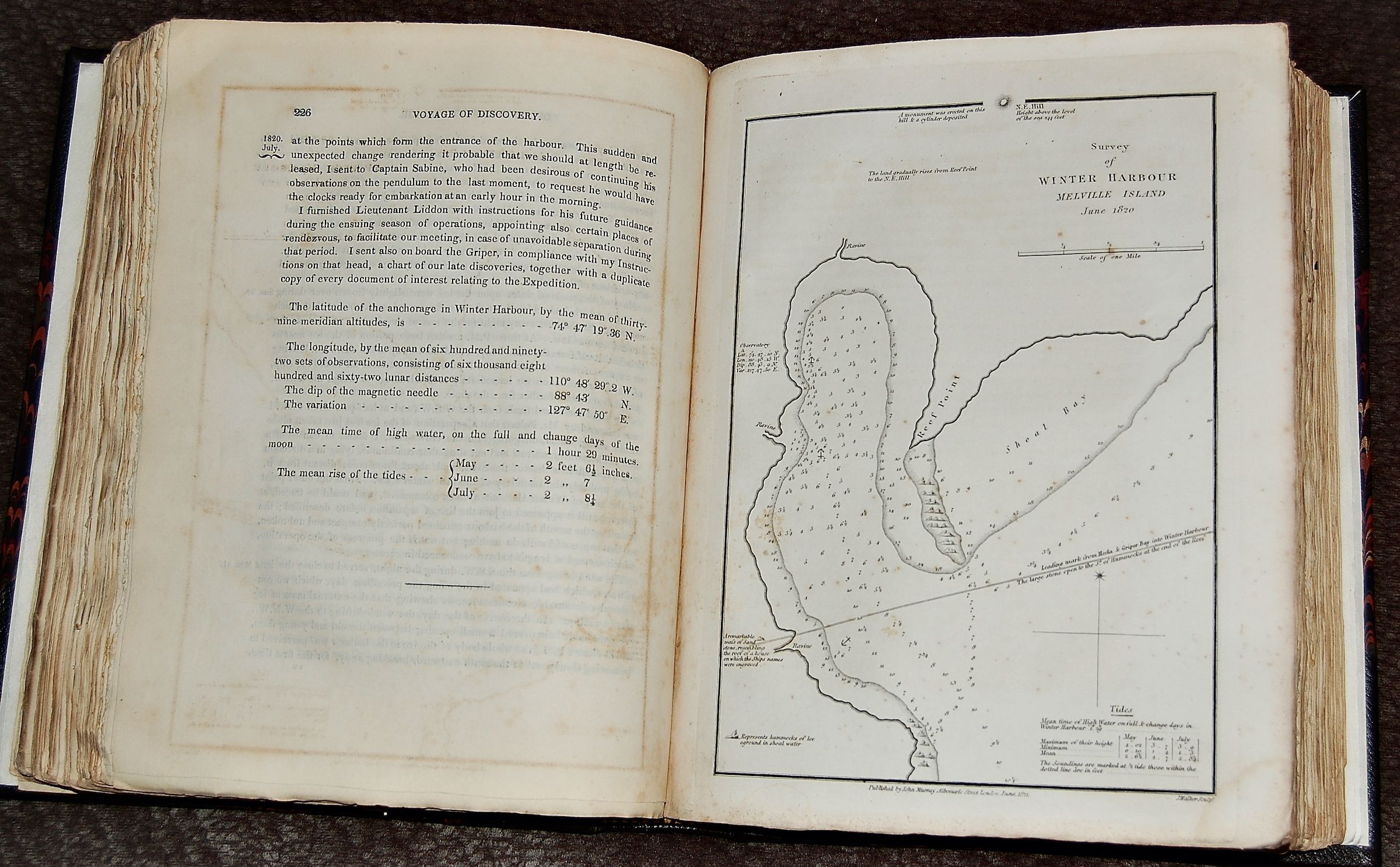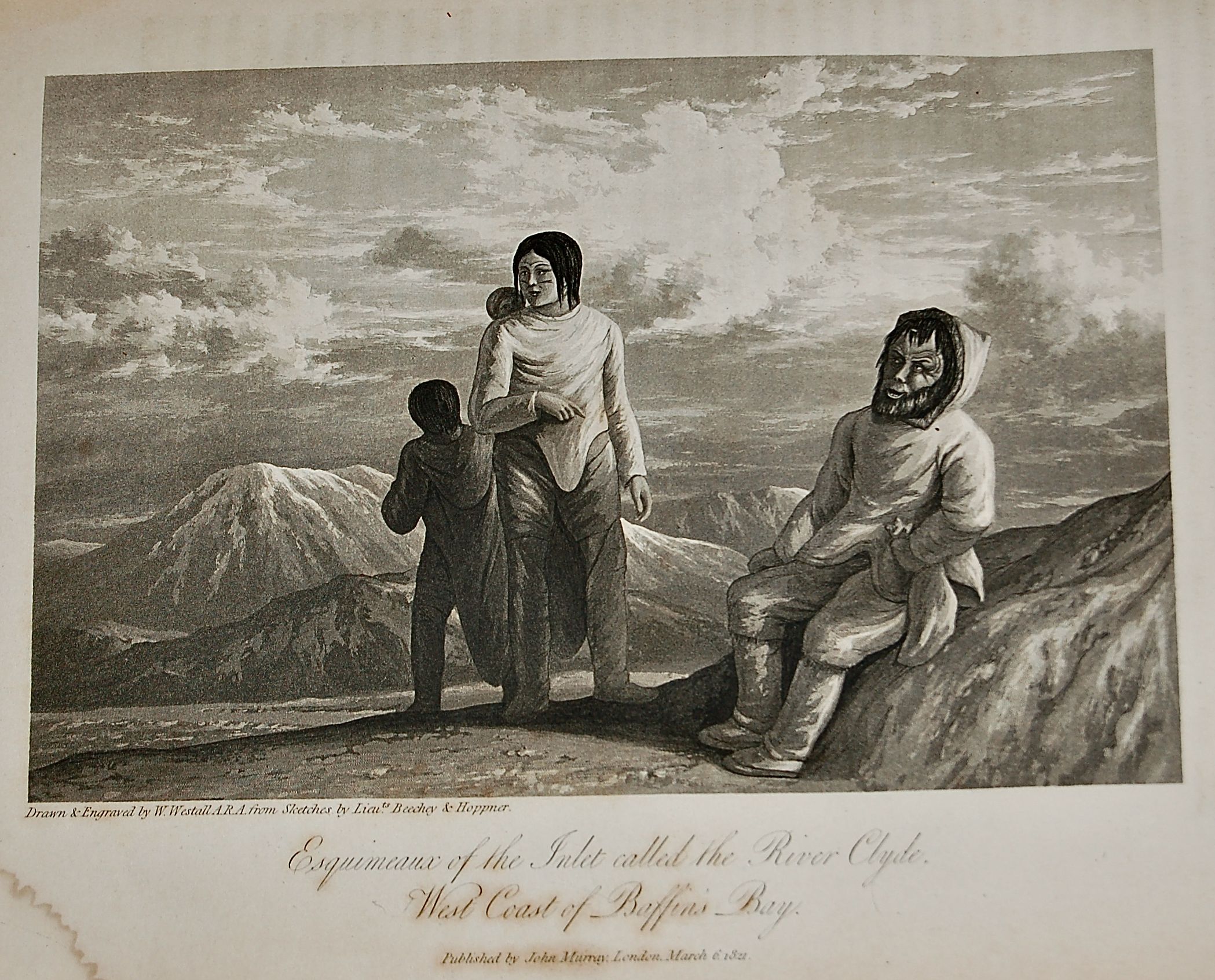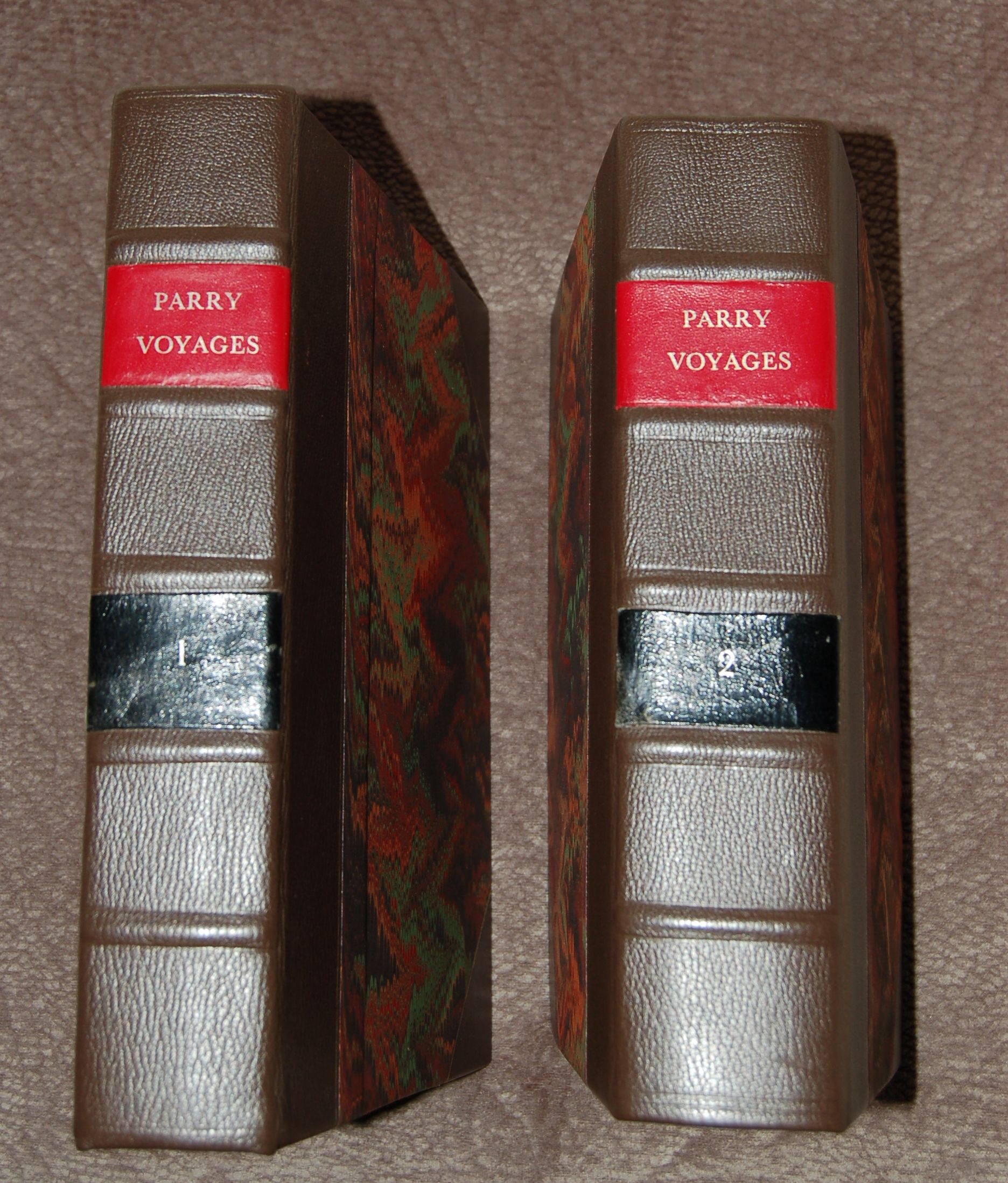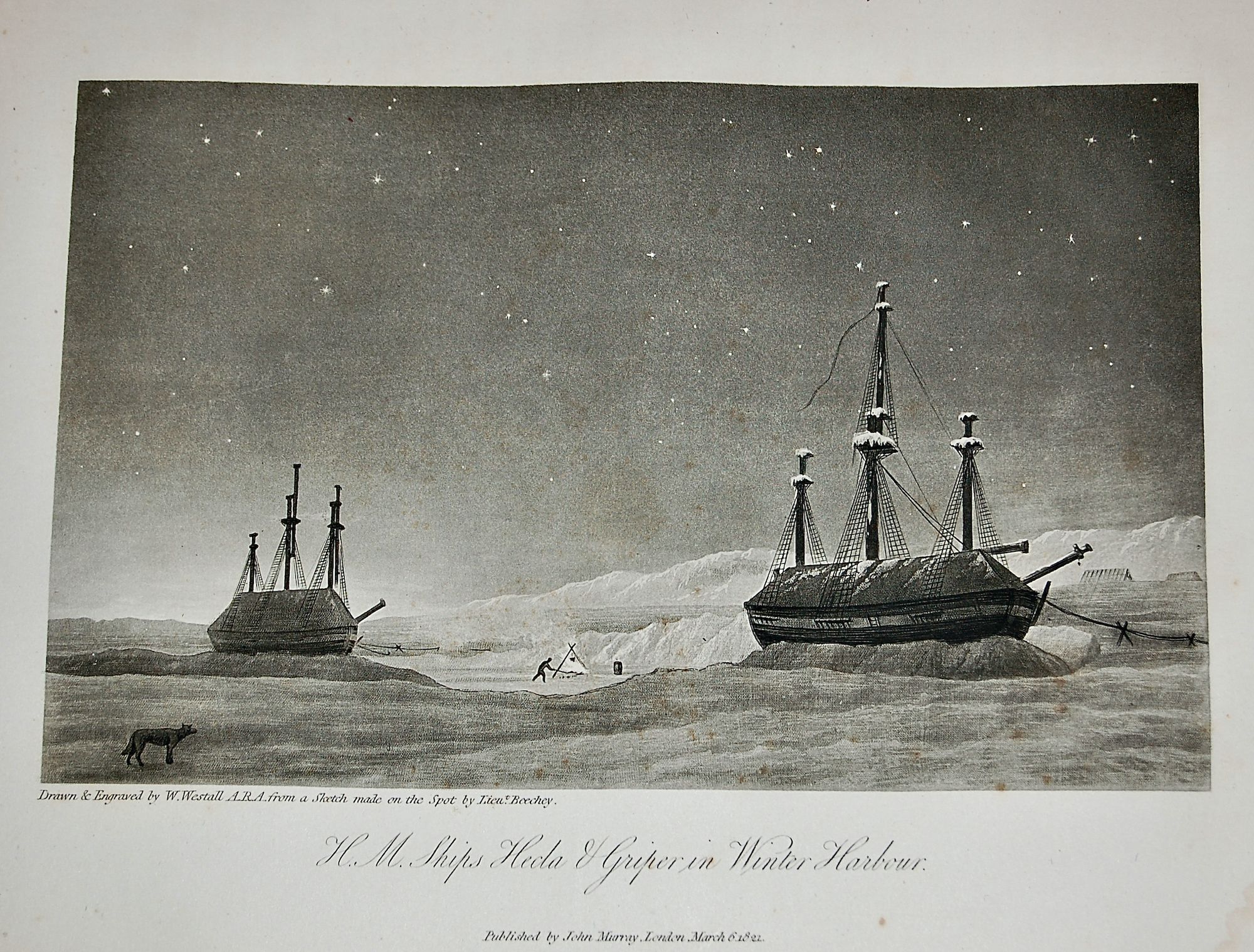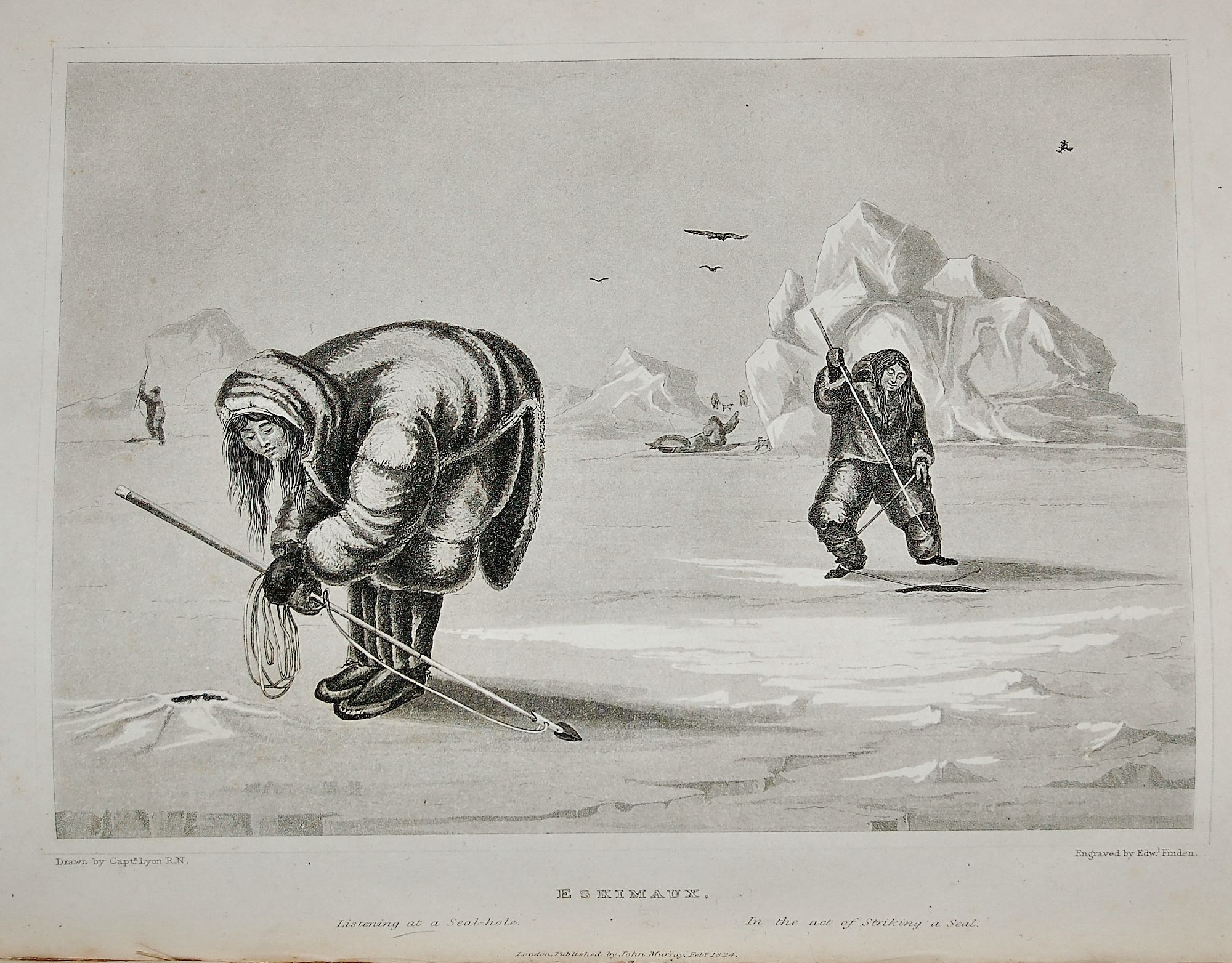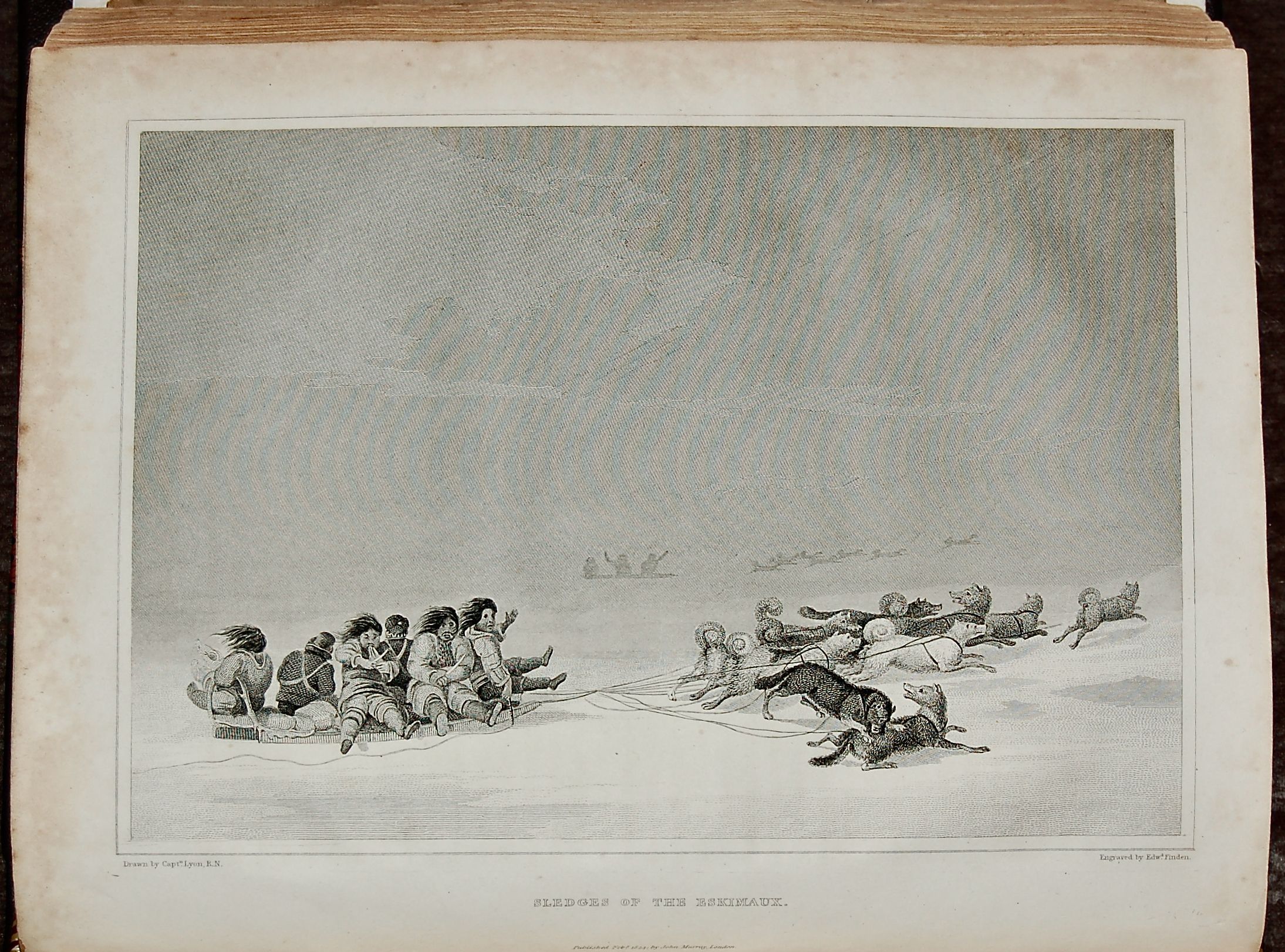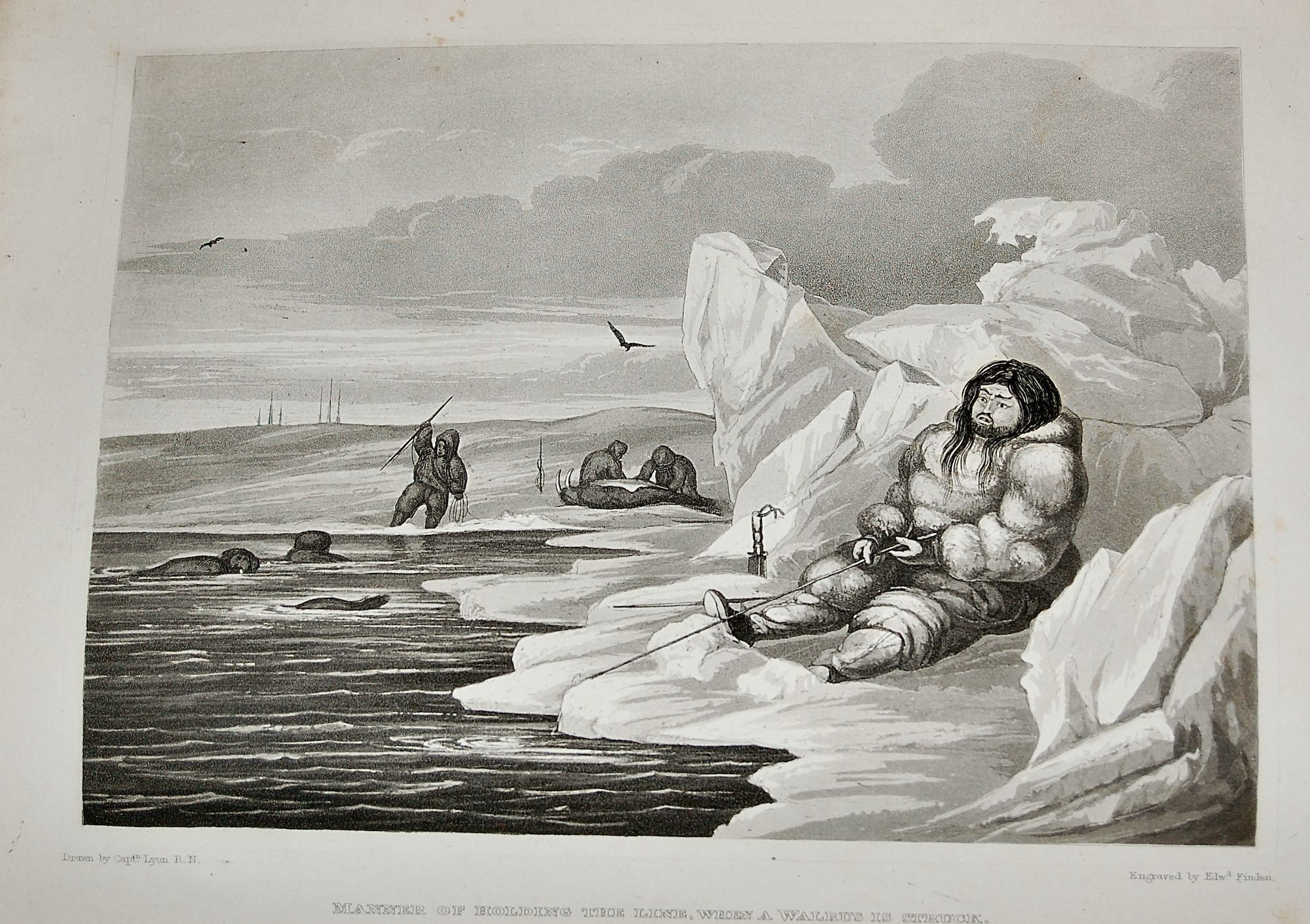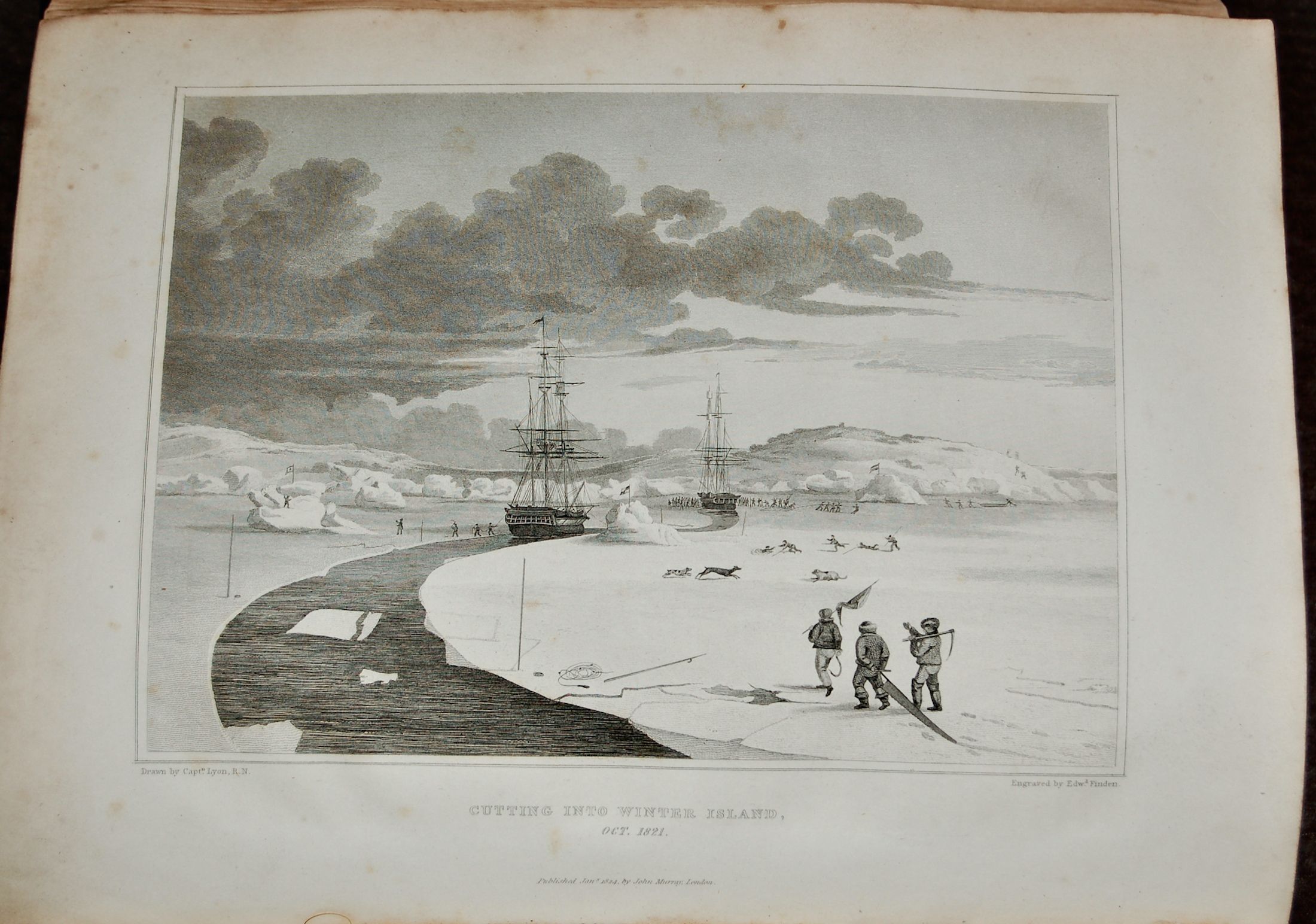Parry, William Edward
Journal of a Voyage for the Discovery of a North-West Passage from the Atlantic to the Pacific; Performed in the Years 1819- 20, in His Majesty’s Ships Hecla and Griper under the Orders of William Edward Parry, R.N., F.R.S, and Commander of the Expedit
back
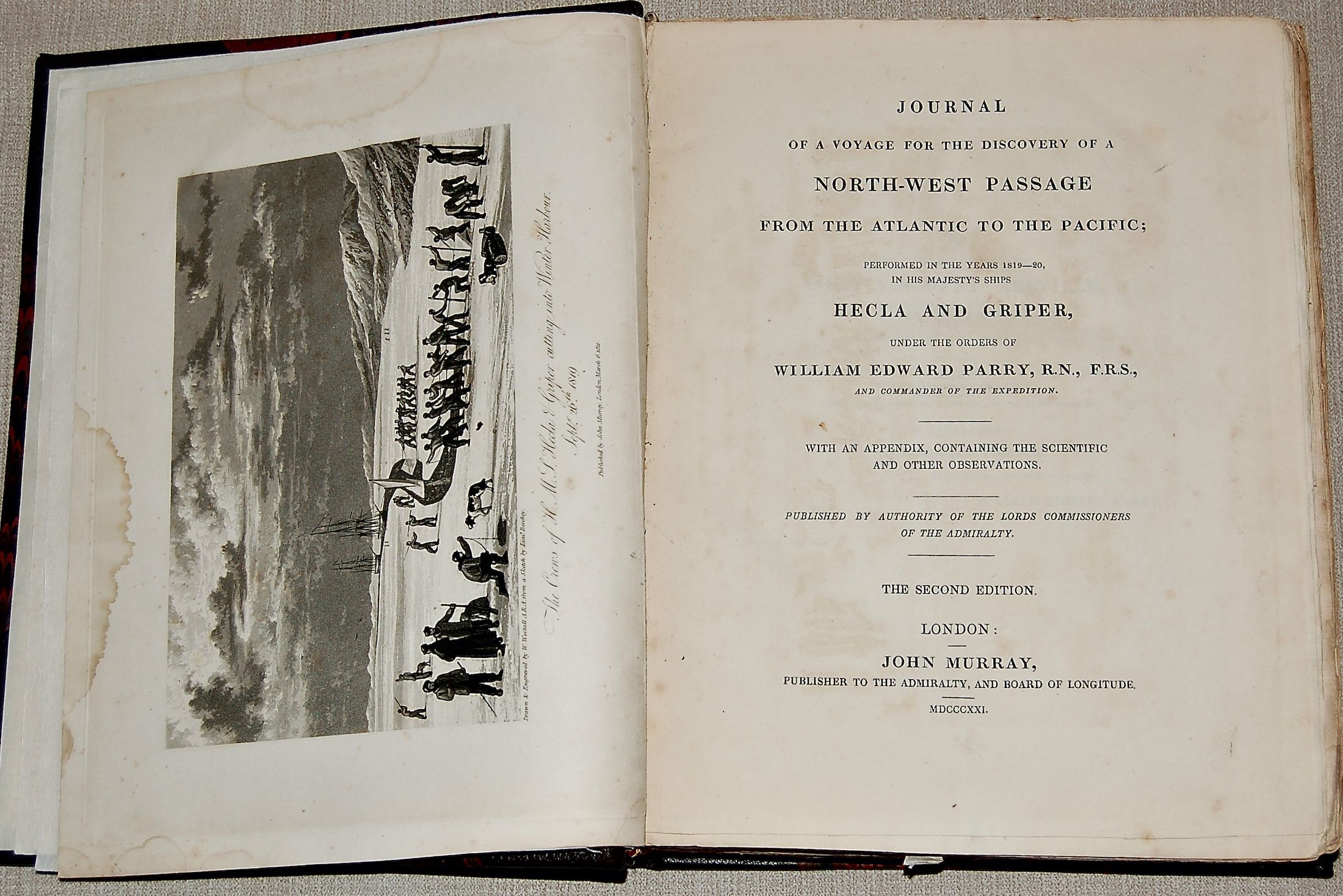
|
Seller ID: 1400 Journal of a Voyage for the Discovery of a North-West Passage from the Atlantic to the Pacific; Performed in the Years 1819- 20, in His Majesty’s Ships Hecla and Griper under the Orders of William Edward Parry, R.N., F.R.S, and Commander of the Expedition. With an Appendix Containing the Scientific and Other Observations. London: John Murray, 1821. Second edition (pp. xxix, 310, clxxix). Quarto (28 cm) in modern three-quarter dark brown morocco over complimentary marbled boards, gilt titles to spine, red and black morocco labels, five raised bands, tissue guards; twenty plates as called for, including several folding charts, views, and plans; also various tables, journals, and lunar observations, crew lists, Admiralty orders, etc. This and our copy of Parry’s Journal of the second voyage do not, strictly, comprise a set as the second volume is slightly larger (by about 1.5 cm). More properly they might be described as ‘companion volumes’ in matching bindings. Save for a very few with minor, unobtrusive damp stains, the plates accompanying the text of the first Journal are clean, bright, and, undamaged. This is the report of the first of Parry’s several voyages of discovery into the northern seas in search of a Northwest Passage. The ODNB says, in part, “... early in 1819 Parry (still only a lieutenant) was appointed to the sturdy bomb-vessel the Hecla, in command of another expedition to discover the [Northwest] passage, and sailed from Deptford in May, with the brig Griper in company. His instructions, which were necessarily conditional and vague, were to go up the west side of Baffin Bay, through Lancaster Sound (which Ross had reported landlocked), and so, if possible, to Bering Strait. After a clear run westward through Lancaster Sound he reached Melville Island (one of the later named Parry Islands) and wintered there, hoping to resume the voyage in the following season. This aim was frustrated by pack ice. The two ships returned safely, and came into the Thames in mid-November 1820, with much scientific material. Parry's dispatches, sent in advance by a whaler, had reached the Admiralty on 4 November, on which date he was promoted to the rank of commander. He received the freedom of his native city and many other honours; in the following February he was elected a fellow of the Royal Society and, with the officers and men of the expedition, he received the parliamentary grant previously offered as a reward for those who should first pass the meridian of 110° W within the Arctic circle. Parry's care for his men, his solution of many of the problems of wintering in the ice, and his meticulous scientific work set a pattern of Arctic exploration for a generation. Many of his young officers (notably James Clark Ross) went on to be famous explorers themselves. The overland explorations of his good friend John Franklin were intended to be complementary to Parry's expeditions.” After more than 187 years, still unopened, in a handsome, restrained, modern binding-- leather over marbled paper, by John Burbidge, with clean, bright illustrations. TOGETHER WITH William Edward Parry. Journal of a Second Voyage for the Discovery of a North-West Passage from the Atlantic to the Pacific; Performed in the Years 1821-22-23 in His Majesty’s Ships Fury and Hecla, under the Orders of Captain William Edward Parry, R. N., F. R. S. and Commander of the Expedition. London: John Murray, 1824. First edition (pp. xxx, 571, errata). Quarto (29.5 cm), in modern three-quarter morocco over complimentary marbled boards, gilt titles to spine, red and black morocco labels, five raised bands; illustrated by 26 plates engraved from excellent drawings by George Lyon, commander of the Hecla; 5 ‘Eskimaux’ charts, 4 naval charts, and 4 horizon views, folded, in map pocket inside back cover as called for, also various tables, journals, and lunar observations, crew lists, Admiralty orders, etc. This and our copy of Parry’s Journal of the first voyage do not, strictly, comprise a set as the second volume is slightly larger (by about 1.5 cm). More properly they might be described as ‘companion volumes’ in matching bindings. Unobtrusive blind stamp on title page and one other place of the American Congregational Association. This is the journal of Parry’s second expedition in search of a Northwest Passage. He barely had time to organize his affairs before setting out again on this, his longest venture into the Arctic. In early May, 1821, he sailed for the eastern Arctic in the refitted vessels Fury and Hecla, accompanied by the supply ship Nautilus. The OED says, in part, “Passing through Hudson Strait and Foxe Channel..., he examined Repulse Bay, proved the accuracy of the observations made by Christopher Middleton, passed one winter at Winter Island and another at Igloolik (enlivened by the presence of the local Inuit), and traced Fury and Hecla Strait to its western end. Through the summers of 1822 and 1823 this strait was blocked by ice, and, as symptoms of scurvy were beginning to appear, Parry judged it inadvisable to attempt a third winter in the ice. The ships returned to Britain and were paid off at Deptford on 14 November 1823. Parry had meantime been advanced to the rank of post captain (8 November 1821) and was now appointed acting hydrographer (1 December 1823).” Parry’s expeditions, and his reports on their findings, are remarkable for several reasons. His meticulous and far-sighted preparations. For example, he saw to it that his two vessels were for all practical purposes identical with interchangeable rigging, equipment, etc., rather than sailing with one large craft supported by a small sloop or similar small vessel; secured a supply of fresh water from snow by constructing a steel jacket around the ships’ stovepipes, a sort of kelly kettle, which produced, he says, over sixty gallons of fresh water at a time. The good care he took of the men in his command. He organized meaningful recreation for his crews, not one of whom, he says, returned from the expedition ‘unable to read his Bible’, and he redesigned their sleeping quarters to increase ventilation and prevent damp. His crew lists were over-subscribed, and many men served on both of these two expeditions. The interest he took in the Inuit. Sizeable parties were encountered and invited on board sometimes with comic results (Hosts and guests did not interpret table manners in quite the same way). Lyon’s drawings show details of native clothing and hunting methods, and include several especially good portraits of individuals and families-- the best is of a sled full of children having a grand time careering around behind a rather ill-disciplined dog-team (an arctic Krieghoff). Found in the original paper wraps, now in a handsome, restrained binding-- modern leather over marbled paper, by John Burbidge, with clean, bright illustrations. Price: $4800.00
For more information or to place your order, you can email us at info@trilliumbooks.ca, telephone us at 705-749-0461, |

